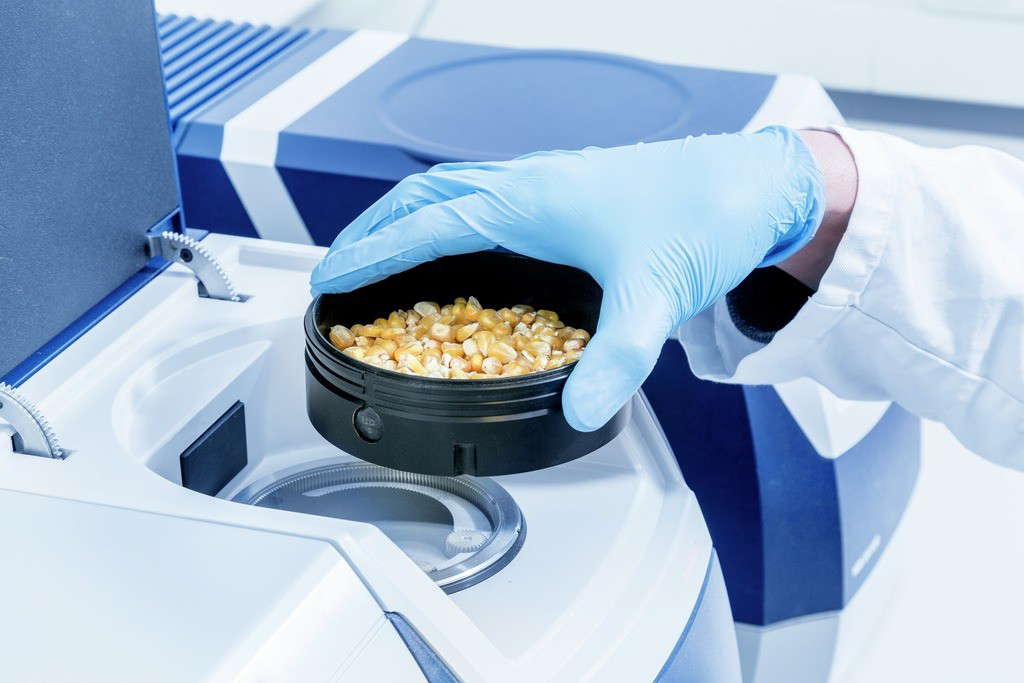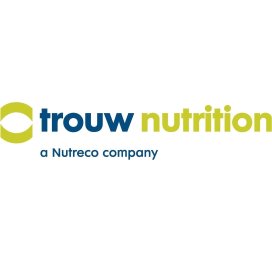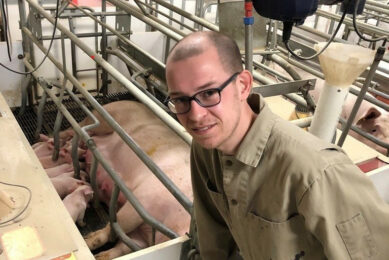Getting a more accurate measurement of reactive lysine

A new parameter can help NIR users in dealing with the variation in the quality of high-protein raw materials, based on the lysine in the raw material that is available to animals.
Lysine is one of the most important amino acids for achieving optimal growth and protein intake in pigs and poultry. In pig and poultry diets, lysine is often the first limiting amino acid, and therefore the lysine content dictates performance in terms of animals’ growth. Because lysine is an essential amino acid, it cannot be synthesised in the body. It must therefore be supplied through protein in the raw materials within the diet. To ensure adequate lysine supply, diets are formulated to provide the required level of digestible lysine. Diets that provide an inadequate level of digestible lysine from the raw materials are supplemented with synthetic lysine to ensure sufficient supply. This approach works perfectly, as long as the digestible lysine in the raw materials is metabolically available to be fully used by the animal. However, the latter is not always the case. Trouw Nutrition has recently developed an NIR calibration line to predict available lysine in heat-processed protein sources.
Figure 1 – Lysine composition.

Lysine and effect of heat treatment
Lysine is an amino acid that possesses a reactive amino group [ε-amino group-NH3+] on its side chain, as is shown in Figure 1. This reactive lysine group (ε-amino group) can react with a wide variety of compounds that are present in foods and feedstuffs. For example, reactions with reducing sugars, fats, fat oxidation products, polyphenols, vitamins, food additives and other amino acids produce modified lysine derivatives (Hurrell and Carpenter, 1981). When a food or feedstuff undergoes processing, particularly heat processing, the rate of these reactions is greatly accelerated. And since many protein sources undergo extensive heat treatment during manufacture, significant amounts of lysine may have been modified (e.g., bound to other molecules). The most important lysine modification occurs when lysine’s ε-amino group reacts with reducing sugars (Maillard reaction). This reaction results in the formation of a Schiff base (Figure 2). The Schiff base then undergoes irreversible rearrangement to produce Amadori product, also known as early Maillard product (Finot et al., 1977). The Amadori product can further react to produce brown pigments or melanoidins, also known as advanced Maillard products (Hurrell and Carpenter, 1981) (Figure 2). The Maillard reaction has severe consequences for both the digestibility and the metabolic availability of lysine to the growing animal. The Schiff base products are not available for protein deposition, but will be measured as total lysine, as the reaction is reversible.
Figure 2 – The reaction of protein-bound lysine with glucose (Maillard reaction, from Rutherfurd, 2010).

Lysine available for the animal
The lysine that has reacted to become an Amadori product or an advanced Maillard product can no longer be used as lysine, just like the Schiff base products. Both will not be absorbed by the animal. However, when we measure reactive or available lysine, we will measure the lysine that is available for the protein deposition. Several alternative analytical methods (e.g., the FNDB method) have been developed that only analyse the unbound lysine/ reactive lysine and/or Schiff base lysine. The reactive lysine and can be defined as the undamaged lysine available for protein deposition in the animal (Figure 3).
Figure 3 – Absorption of lysine in the animal metabolism (from Rutherfurd, 2010).

Variation in reactive lysine content
In the end, it is important to know that the reactive lysine is actually used and absorbed by the animal. The digestible lysine in heat-treated materials is not fully bio-available. In addition, the bio-availability of digestible lysine from heat-treated raw materials, such as by-products from the food industry, soybean meal, sunflower meal and rapeseed meal, differs largely between sources, due to variation in the processing methods and conditions. Trouw Nutrition R&D has shown that raw materials still differ in terms of the ratio of reactive lysine to total lysine. Thus, when diets are formulated to a constant total digestible lysine level, the animal performance is reduced. Variation in heat damage during the processing of raw materials will result in variation in reactive lysine content and thus the amount of metabolically available lysine. This variation should be considered when evaluating the quality of the raw materials. Only good quality raw materials will ensure maximal growth performance in monogastric animals.
NIR calibration lines
Trouw Nutrition has used these results to develop NIR calibration lines for reactive lysine for several raw materials, such as soybean meal, rapeseed meal and sunflower meal, in order to establish the quality of these raw materials. Knowledge of the reactive lysine content of raw materials can be applied in 2 ways:
- as a quality control parameter, and
- as a formulation parameter.
Although application as a formulation parameter is the ultimate goal, the focus of the current communication is on application as a quality control parameter. The objective of developing this quality control parameter is to help the user to create a better quality management system, resulting in a more complete picture of the activities in the process within the raw materials plants.
Raw materials quality classes based on reactive lysine
For soybean meal, rapeseed meal and sunflower meal, NIR calibrations have been developed to predict the reactive lysine levels. The calibrations are based on ground material. The NIR results for reactive lysine are categorised into 5 quality classes, which can be used for quality control (QC) purposes. These 5 quality classes have been defined based on the ratio of measured reactive lysine to total lysine content. This ratio therefore describes undamaged lysine versus total lysine. A higher reactive lysine value means less heat damage to the sample. Based on the frequency distribution of analysed samples (Figure 4), the 5 quality control classes have been defined as follows:
- QC class 1 : 5% samples with lowest ratio of reactive to total lysine
- QC class 2 : The next 15%
- QC class 3 : The next 60%
- QC class 4 : The next 15%
- QC class 5 : The 5% samples with the highest ratio of reactive to total lysine (Figure 4).
Figure 4 – Frequency distribution of samples over the 5 quality classes.

Gaining insight in quality of raw material
These quality categories can help the user to gain insight into the quality of their high-protein raw materials compared to normal market quality, by analysing whether the distribution over quality classes of incoming samples is very different from the 5, 15, 60, 15, and 5% for quality classes 1 through 5 respectively. This analysis may lead to subsequent decisions, such as the decision to:
- Improve the management of raw materials in the feed plant
- Separate low-quality and high-quality raw material into different silos
- Renegotiate the purchasing price of the raw materials according to their quality
- Undertake supplier analyses
- Carry out extra analyses of the anti-nutritional factors (ANFs) when the category of reactive lysine level is high and the heat damage is low (in the case of soybean meal). The product might have been under-processed, which could have resulted in higher ANFs.
The quality parameters for reactive lysine in soybean meal, rapeseed meal, sunflower meal, fish meal and meat and bone meal are now available for customers via Trouw Nutrition’s modular precision feeding system NutriOpt. Future developments at Trouw Nutrition R&D include the possibility of using reactive lysine also as a nutritional value in feed formulation to ensure a more consistent animal response.
NutriOpt NIR and Nutritional Database
NutriOpt is a modular precision-feeding system made up of proven components that offer the latest nutritional science data and technology. When used together, these components make it possible to fine-tune your feeding strategy with high accuracy. The NutriOpt system combines precise NIR measurements with the values and calculations in our extensive Nutritional Database. This combination allows you to accurately optimise your nutrition approach based on available ingredients as well as comprehensive scientific data. Trouw Nutrition’s latest innovation reactive lysine, will be added as a parameter to the NutriOpt NIR reports (Table 1).
The NutriOpt Nutritional database is supported by a platform that critically reviews feed evaluation systems and develops new and improved methods for precision livestock nutrition. In times of high volatility in raw material prices, advanced feed formulation services are an important asset for customers who seek more cost-efficient and sustainable solutions. Data generated from feed evaluation (e.g., NIR) is entered into the NutriOpt nutritional database, which is directly accessed by the formulation software used by nutritionists at Trouw Nutrition’s operating companies’ feed plants and by compound feed customers.






